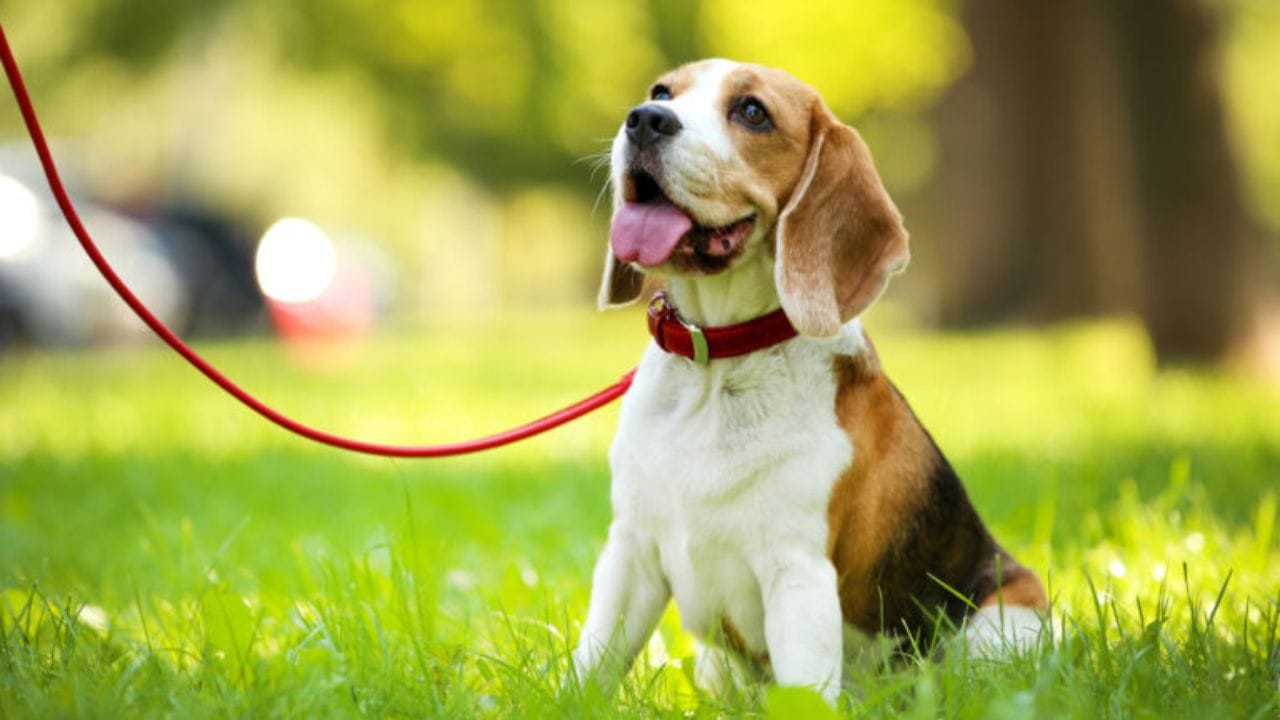Dogs are fascinating creatures, and their reproductive cycle is no exception. One of the most important aspects of a dog's reproductive system is the heat cycle, which is the time when a female dog is fertile and can conceive. The heat cycle is a complex process that varies depending on the breed and the individual dog.

Female dogs typically go into heat twice a year, although this can vary depending on the breed. The heat cycle lasts for around three weeks, during which time the female dog is fertile and can become pregnant. It's important to keep a close eye on your dog during this time, as she may exhibit behavioral changes and may be more prone to wandering off in search of a mate.
Knowing how often dogs go into heat and how to recognize the signs of the heat cycle is essential for responsible dog ownership. It can help you to prevent unwanted pregnancies and ensure that your dog stays healthy and happy. With the right knowledge and care, you can help your dog navigate this important aspect of her reproductive system.
Understanding the Canine Estrous Cycle
The canine estrous cycle, also known as the heat cycle, is the reproductive cycle of female dogs. It is a natural process that occurs in all intact female dogs, except those that have been spayed. The cycle is controlled by hormones produced by the ovaries and the pituitary gland.

The canine estrous cycle has four stages, which are proestrus, estrus, diestrus, and anestrus. The cycle starts with proestrus, which is the period of time when the female dog's body prepares for mating. During this stage, the female dog may experience a bloody vaginal discharge, which can last for up to three weeks. This is a sign that the female dog is in heat and is ready to mate.
The next stage is estrus, which is the actual mating period. During this stage, the female dog's estrogen levels peak, and she is receptive to mating. This stage can last for up to nine days, and it is during this time that the female dog is most likely to become pregnant.
After estrus, the female dog enters diestrus, which is the period of time when her body prepares for pregnancy. If the female dog does not become pregnant, she will enter anestrus, which is the period of time when her body returns to its normal state.
The frequency of the canine estrous cycle varies depending on factors such as breed, size, and age. Most female dogs will go into heat twice a year, but this can differ significantly for smaller or larger breeds. For example, small breeds may go into heat three or four times a year, while larger breeds may only go into heat once a year.
In conclusion, understanding the canine estrous cycle is important for dog owners who want to breed their dogs or prevent unwanted pregnancies. By knowing the different stages of the cycle and the frequency at which it occurs, dog owners can make informed decisions about their dog's reproductive health.
Frequency of Heat Cycles
The frequency of heat cycles in dogs varies depending on factors such as breed, size, and age. Most female dogs will go into heat twice a year, with an average interval between heat cycles of about 6 months. However, this can differ significantly for smaller or larger breeds. For example, small breeds may go into heat three or four times a year, while larger breeds may only go into heat once a year.

According to the American Kennel Club, it can take some dogs 18-24 months to develop regular cycles. Small dogs will tend to go into heat more frequently, as much as three or four times a year. Very large breeds, like Great Danes, may only go into heat every 12 to 18 months.
Factors Affecting Heat Frequency
The frequency of heat cycles in dogs can be affected by various factors such as age, breed, and health. For example, younger dogs may have more frequent heat cycles than older dogs. Additionally, certain breeds may have a higher or lower frequency of heat cycles than others.
According to the Cornell University College of Veterinary Medicine, the most notable sign of a dog's heat cycle is bloody vaginal discharge, usually lasting between 14 and 21 days. The four estrous cycle stages include proestrus, estrus, diestrus, and anestrus. Estrogen is a hormone produced by the ovaries during proestrus and peaks one to two days before the next stage (estrus).
It is important to note that spaying a female dog can prevent heat cycles altogether. This is a common procedure that involves the removal of the ovaries and uterus. Spaying can also reduce the risk of certain health issues such as mammary tumors and pyometra. It is recommended to consult with a veterinarian to determine the best course of action for your dog's health and well-being.
Recognizing Signs of Heat
When it comes to understanding how often dogs go into heat, it's important to recognize the signs that your dog is in heat. This can help you to better understand your dog's reproductive cycle and take appropriate measures to prevent unwanted pregnancies.
Physical Indicators
One of the most obvious signs that your dog is in heat is a swollen vulva. This is the opening to the dog's vagina and is located right below the dog's anus. When in heat, your dog's vulva will swell and redden. This can be very pronounced and alarming to dog owners seeing it for the first time, but it's a normal part of estrus.
Another physical indicator of heat is a bloody discharge. This discharge can range from light pink to dark red and may be noticeable on your dog's bedding or around the house. It's important to keep your dog clean during this time to prevent infection.
Behavioral Changes
In addition to physical indicators, your dog may also exhibit behavioral changes when in heat. She may become more restless, anxious, or vocal than usual. She may also become more affectionate or clingy. Some dogs may even become aggressive or territorial during this time.
It's important to keep a close eye on your dog when she's in heat, especially if you have other dogs in the house. You may need to separate her from male dogs to prevent unwanted mating. It's also important to keep her on a leash when outside to prevent her from running off in search of a mate.
Overall, recognizing the signs of heat is an important part of understanding how often dogs go into heat. By paying attention to your dog's physical and behavioral changes, you can better manage her reproductive cycle and keep her healthy and safe.
Breeding Considerations
When considering breeding a female dog, there are a few important factors to keep in mind. These include the optimal breeding time and how to avoid unwanted pregnancy.
Optimal Breeding Time
The optimal breeding time for a female dog is during her heat cycle, which typically occurs every six to twelve months. However, it is important to note that the timing of a dog's heat cycle can vary depending on the breed and individual dog. Therefore, it is recommended to monitor the dog's behavior and physical signs to determine the best time for breeding.
During the heat cycle, the female dog will experience a swollen vulva and bloody discharge. As the cycle progresses, the discharge will become less bloody and more clear or straw-colored. This is the optimal time for breeding, as the female dog is most fertile during this stage.
Avoiding Unwanted Pregnancy
While breeding a female dog can be a rewarding experience, it is important to take steps to avoid unwanted pregnancy. This includes keeping the female dog away from male dogs during her heat cycle, as well as considering spaying or neutering the dog to prevent future heat cycles and potential health issues.
It is also important to note that breeding a female dog too young or too frequently can have negative health consequences for both the mother and her offspring. Therefore, it is recommended to wait until the female dog is at least two years old and has had a few heat cycles before considering breeding. Additionally, it is important to give the dog time to rest between litters to ensure her health and well-being.
Health Implications of Heat Cycles
Heat cycles are a natural part of a female dog's reproductive cycle. However, they can also pose some health risks that pet owners should be aware of.
Pyometra Risk
After a female dog goes through a heat cycle, she is at risk of developing a serious medical condition called pyometra. Pyometra is a bacterial infection that affects the uterus and can be life-threatening if left untreated.

Symptoms of pyometra include lethargy, loss of appetite, vomiting, and increased thirst. If a pet owner notices any of these symptoms in their female dog after a heat cycle, they should take her to the veterinarian immediately.
The risk of pyometra can be reduced by spaying the dog. Spaying removes the uterus and eliminates the risk of pyometra.
Mammary Cancer Concerns
Female dogs that go through multiple heat cycles have an increased risk of developing mammary cancer. This risk can be reduced by spaying the dog before her first heat cycle.
The risk of mammary cancer increases with each heat cycle. Therefore, pet owners should consider spaying their female dogs to reduce the risk of developing mammary cancer.
In conclusion, pet owners should be aware of the health implications of heat cycles in female dogs. The risk of pyometra and mammary cancer can be reduced by spaying the dog. If a pet owner notices any symptoms of pyometra in their female dog after a heat cycle, they should take her to the veterinarian immediately.
Managing a Dog in Heat
When a female dog is in heat, it is important to take certain measures to ensure her safety and comfort. There are two main categories of management: home care tips and professional veterinary support.

Home Care Tips
The following are some tips for managing a dog in heat at home:
- Keep her indoors: During her heat cycle, it is important to keep your dog indoors to prevent unwanted mating. If you have a male dog at home, it is best to keep them separated.
- Provide a comfortable environment: Make sure your dog has a comfortable bed and plenty of water to drink. She may also appreciate having a cozy blanket to snuggle with.
- Monitor her behavior: Female dogs in heat may exhibit restlessness, anxiety, and other behavioral changes. Keep an eye on her behavior to ensure she is not experiencing any discomfort or pain.
- Keep her clean: During her heat cycle, your dog may experience vaginal discharge. Keep her clean by wiping her with a damp cloth or using dog-specific wipes.
Professional Veterinary Support
If you have any concerns about your dog's health or behavior during her heat cycle, it is important to seek professional veterinary support. Some of the services that your vet may provide include:
- Hormone therapy: Your vet may recommend hormone therapy to help regulate your dog's heat cycle and prevent unwanted mating.
- Spaying: If you do not plan on breeding your dog, spaying is a permanent solution to preventing heat cycles and the risk of certain health issues.
- Behavioral management: Your vet may provide advice on managing your dog's behavior during her heat cycle, including tips on reducing anxiety and restlessness.
By following these home care tips and seeking professional veterinary support when necessary, you can help ensure that your dog is safe and comfortable during her heat cycle.
Spaying and Heat Prevention
Benefits of Spaying
Spaying, or the surgical removal of a female dog's reproductive organs, is a common procedure that can help prevent heat cycles. The benefits of spaying extend beyond preventing heat cycles, however. Spaying can also reduce the risk of certain health issues, such as uterine infections and breast tumors. In fact, spaying a female dog before her first heat cycle can greatly reduce her risk of developing breast cancer later in life.
Timing of Spaying Procedure
The timing of a spaying procedure can vary depending on the individual dog and the veterinarian's recommendations. Generally, it is recommended to spay a female dog before her first heat cycle, as this can greatly reduce her risk of developing breast cancer later in life. However, if a female dog has already gone through one or more heat cycles, it is still beneficial to spay her to prevent future heat cycles and reduce the risk of health issues.
It is important to note that spaying a female dog too early or too late can also have negative effects on her health. For example, spaying a female dog before she has fully matured can increase her risk of certain health issues, such as hip dysplasia. On the other hand, spaying a female dog too late can increase her risk of developing certain health issues, such as mammary tumors.
Overall, spaying is a safe and effective way to prevent heat cycles and reduce the risk of certain health issues in female dogs. The timing of the spaying procedure should be carefully considered based on the individual dog's age, health, and reproductive history.
Conclusion:
In conclusion, the heat cycle is a crucial aspect of a female dog's reproductive system, requiring careful attention from pet owners. Understanding the stages of the canine estrous cycle, recognizing the signs of heat, and managing breeding responsibly are essential for maintaining the health and well-being of your dog.
It's important to monitor your dog closely during her heat cycle to prevent unwanted pregnancies and to be aware of health risks such as pyometra and mammary cancer. Consulting with a veterinarian and considering options like spaying can help manage or eliminate heat cycles and reduce the risk of related health issues. Proper knowledge and proactive management of a female dog's reproductive health can ensure she leads a healthy, happy life.




